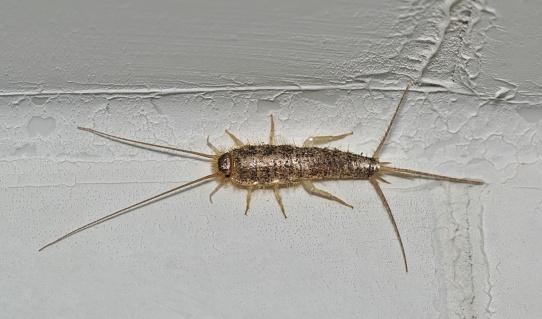What is silverfish?
One of the most prevalent nuisance insects worldwide is the silverfish. Silverfish are voracious eaters who subsist on foods that are high in starches. They especially love paper, and will eat through boxes, books, and other household materials. Their bodies are covered with tiny scales, which are often described as fish-like in appearance. A silverfish can live up to eight years and measures about 0.5″-1″ long. The insects are nocturnal and are rarely seen during the daytime hours.
Silverfish Infestation Signs
Do you think you might have silverfish in your home? Here are some signs to look for before hiring a pest control:
1. The presence of live silverfish is the first indication of a silverfish infestation. The colour of these tiny, adaptable, and slippery insects ranges from blue-silver to brown-grey. They have a teardrop form and move by wiggling back and forth, much like a fish does when swimming.
2. The faeces of silverfish are quite distinctive. They resemble tiny black peppercorns and are frequently located in areas where silverfish like to congregate, such as the underside of cabinets or the backs of furniture.
3. Throughout their entire lives, silverfish shed their skin. Despite being tiny, delicate, and translucent, the outer shells are a reliable sign of a silverfish infestation.
4. Even if you don’t see the silverfish moulting their skin, you might observe the golden dust they leave behind on surfaces. These yellow stains frequently appear on clothing, books, papers, and cardboard boxes.
5. Finding the damage that silverfish are doing is one of the simplest methods to find them. The starchy food that silverfish eat includes cardboard, wallpaper, clothes, and linens. To determine whether you have a silverfish infestation, look for holes or items that have been bitten through.
How do Pest Control Experts Get Rid of Silverfish?
When you hire a professional silverfish pest control, the process our team uses to get rid of silverfish is as follows:
1. A thorough inspection: An extensive inspection is always the first step taken by our staff. One of our technicians will examine your home’s interior and exterior spaces to spot any locations where pest activity is particularly intense and any potential entry points. Additionally, we will assess the surroundings to see what the silverfish may be reliant on, such as landscaping, water sources, breeding areas, and food sources.
2. Customized Plan: We’ll create a pest management strategy based on the results of our examination in order to assist in lowering silverfish infestations. This pest control strategy will make use of Integrated Pest Management (IPM) procedures and methods, which put equal emphasis on removing pests and addressing the root causes of the infestation.
3. Ongoing Pest Control Services: Once the initial silverfish infestation has been eradicated, we’ll offer continuous pest management services to prevent them from returning. Although we often offer quarterly or monthly pest control services, we’ll decide what frequency is best for you based on the characteristics of your home and the severity of your silverfish problem.
Tips to prevent future silverfish infestations
In terms of silverfish infestations, prevention is always preferable to treatment. To avoid future silverfish infestations on your home or business, follow these recommendations:
1. Keep your house tidy. Pests of all kinds can be avoided by keeping the house clean. Additionally, you have the chance to look for molting skin and other telltale symptoms of a new insect pest infestation, such as droppings. In light of this, dust and vacuum your home at least once a week, or more often if you have children or animals. Use a vacuum to capture and contain silverfish eggs, preventing the bugs from proliferating.
2. Keep all dry food and pet food in airtight containers. Food in boxes, like cereal, should be decanted into sealed, airtight containers. Store larger bags in big rubber tubs with tight-fitting lids. Spills of food should be cleaned up as soon as possible.
3. Keep your clothes somewhere dry. By keeping your garments in a cool, dry climate, you may get rid of humidity in your home. If your house is frequently damp, keep them out of the basement and install a dehumidifier.
4. Ensure adequate ventilation Keep in mind that silverfish enjoy moisture. Concentrate on ventilation warm, moist spaces like bathrooms to make your home as hostile as you can for them.
Frequently Asked Questions
Q. What causes silverfish to come around?
A. Silverfish are drawn to warm, moist areas like basements and crawl spaces. The bugs will get into homes through holes around doors, ripped screens, or foundation fractures. Silverfish will also be drawn inside if unclean dishes are left out in the open.
Q. Are silverfish harmful to humans?
A. The silverfish is one of the most common household pests found in homes. They are not harmful to humans, but they can be a nuisance by leaving behind a silver residue on surfaces that they come into contact with.
Q. How do I know if my home is infested with pests?
A. The first step is to inspect your home for signs of pests. Inspect the inside and outside of your house. Look for droppings, eggs, webs, and nests. If you find any signs of pests, you should contact a pest control service immediately.
